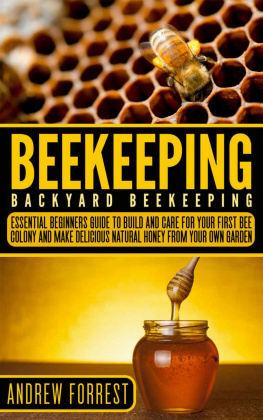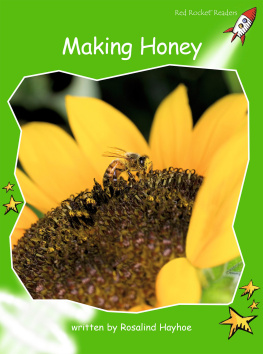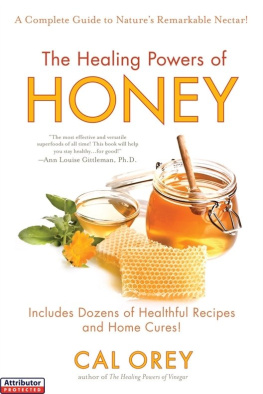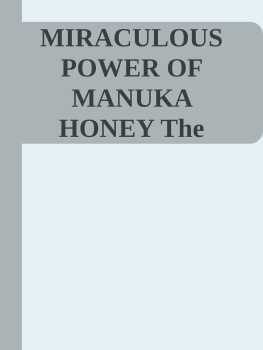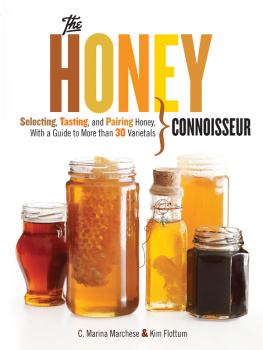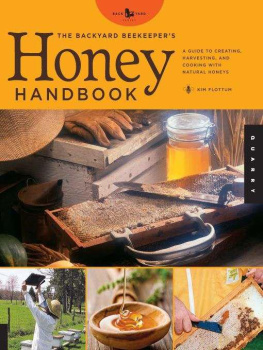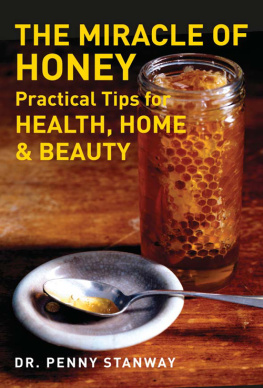First published 2014
Exisle Publishing Limited,
P.O. Box 60490, Titirangi, Auckland 0642, New Zealand.
Moonrising, Narone Creek Road, Wollombi, NSW 2325, Australia.
www.exislepublishing.com
Copyright Cliff Van Eaton 2014
Cliff Van Eaton asserts the moral right to be identified as the author of this work.
All rights reserved. Except for short extracts for the purpose of review, no part of this book may be reproduced, stored in a retrieval system or transmitted in any form or by any means, whether electronic, mechanical, photocopying, recording or otherwise, without prior written permission from the publisher.
A catalogue record for this book is available from the National Library of New Zealand.
Print ISBN 978 1 77559 163 4
ePub ISBN 978 1 77559 200 6 Version 1.0
Disclaimer: This book is a general guide only and should never be a substitute for the skill, knowledge, and experience of a qualified medical professional dealing with the facts, circumstances and symptoms of a particular case. The author and the publisher are not responsible for any adverse effects or consequences resulting from the use of the information in this book. It is the responsibility of the reader to consult a physician or other qualified healthcare professional regarding his or her personal health. The book contains references to products that may not be availableeverywhere. The intent of the information provided is to be helpful; however, there is no guarantee of results associated with the information provided. Use of brand names does not imply endorsement.
Cover and text design and production by Art Rowlands
ACKNOWLEDGEMENTS
In researching this project, I have been able to call on my own experiences in New Zealand as a beekeeping advisor, bee disease specialist, consultant and scientist over 30 years. Ive been extremely fortunate to be able to watch the story of manuka honey as it has unfolded over almost that entire time, and I have even had a few direct personal experiences with the honey, both when nobody seemed to want it, and when it developed into one of the most famous (and certainly most expensive) honeys in the world.
More than that, however, I have been helped beyond measure by a number of people who have played central roles in the whole saga. In particular I want to give a special vote of thanks to Dr Peter Molan, who so kindly agreed to a very long interview, as well as provided thoughtful answers to my numerous email queries. Full of energy, ever-inquisitive, and a great communicator of often complicated science in a way that manages to excite the rest of us, Peter is undoubtedly the star of this book.
Thanks also go to the following people for agreeing to interviews: Kerry Simpson, Murray Reid, Malcolm Haines, Les Blackwell, Bill Floyd, Bill Bracks, Julie Betts, Dr Jonathan Stephens and Dr Ralf Schlothauer. They are all important characters whom you will meet in the pages to come, and the time they spent with me sharing their recollections and insights was the most rewarding part of the whole book-writing experience.
After all these years Alan Bougen remains a close personal friend, and he has been my most constant source of encouragement throughout the process of researching, composing and editing this book. My former colleague Dr Mark Goodwin kindly offered access to the archives at Ruakura Agricultural Research Centre, without doubt the most extensive source of historical beekeeping material in New Zealand. And Murray Reid, a fellow beekeeping advisor for many years, opened his ark-hives to me as well. To all three of these great mates, cheers!
Thanks also must go to Bogdan Gan, at Kiwi Bee Ltd, for showing me the companys extraction and processing facility for medical-grade manuka honey, the most technologically sophisticated beekeepers shed I have ever seen. And kia ora to Kuini Puru of the New Zealand Historic Places Trust for coming in on her day off to take me through the mission house at Mangungu.
I am extremely grateful to Gareth St John Thomas and his team at Exisle Publishing, who have been so supportive in allowing me to write this different sort of book on honey. Ian Watt has been a calm and steady influence during the entire book-making process, including book design and proof-reading.
Lastly, let me beg one further moment of your time to pay tribute to my dear Bonniebest friend, life-partner, and chief cook and bottle-washer these past months. Hugs beyond measure, and kisses sweeter than honey!
A note on using this book
As I hope will become clear, this is not a scholarly book. The book does, however, contain a number of interesting facts and challenging ideas, and so a Notes section has been included at the end of the book to provide more information about the sources I have used. As well, in the text itself you will find endnote markers (1, 2, ...). This indicates that there is more information about the topic being discussed in the Notes at the end of the book.
A QUICK INTRODUCTION
The book you are about to read is not a comprehensive scholarly review of manuka honey, or even of honey in general. There are other publications that attempt to do the latter, not to mention the well over 2500 scientific papers just on the therapeutic properties of manuka honey alone. Those sorts of works can certainly be useful, if sometimes hard for the layman to understand. But the real problem is that, unless you are very good at reading between the lines, they leave out much of what is a very remarkable story indeed.
This book is something a bit different: a biography, but not of the usual sort. There are plenty of human characters in the pages that follow, but the subject of this biography is actually a substance, and a very extraordinary one at that. Its a rags-to-riches tale of how a most peculiar honey became a ground-breaking medicine, along the way turning into one of the most famous honeys in the world. Not so long ago beekeepers literally gave the stuff away. Today you can find manuka honey almost everywhere, from a traditional Chinese medicine dispensary in Shanghai to a childrens burn clinic in Baghdad; and from hospital wards in Great Britain to a stylish specialty food emporium in Rome.
Manuka is a word that the great Polynesian voyagers, the Maori, gave to a plant they discovered when they first came to the islands they called Aotearoa. Hundreds of years later, when Europeans brought honey bees to that same country now known as New Zealand, the bees began producing a very different sort of honey from that plant.
The honey was hard to get out of the combs, and even harder for beekeepers to sell. But eventually an inquisitive university lecturer discovered that it had a unique property, one that had never been found in honey before. And it soon became apparent that the honey could successfully treat wounds that didnt heal any other way. As a result, today the words manuka honey have become firmly established in the worlds vocabulary, as well-known a New Zealand icon as kiwifruit. The pages that follow tell the story of how it got that way.
This is a book intended for the general reader. In fact, anyone with even a casual curiosity about manuka honey should, I hope, enjoy it. It hasnt been written specifically for beekeepers, although they may find something of interest, rather than instruction, in its pages. And it is hopefully free of science-based jargon. In the past I may have been a technical writer, but I know above all else that specialists who arent able to communicate their knowledge in a way that the rest of the world can understand arent really doing their job.


